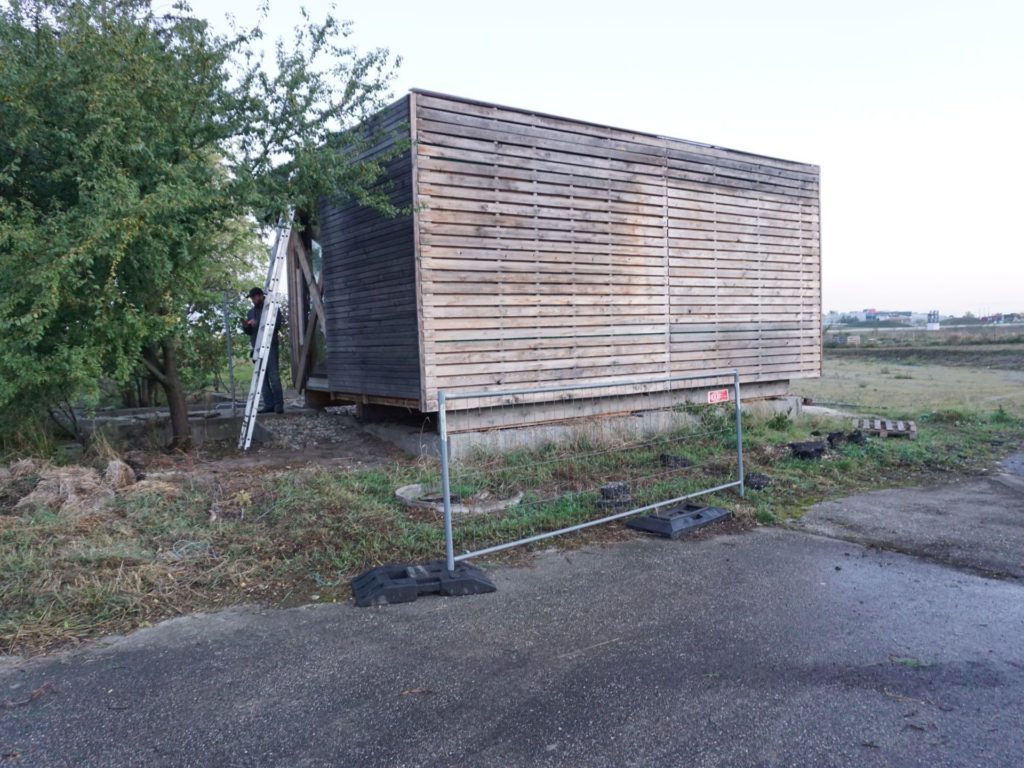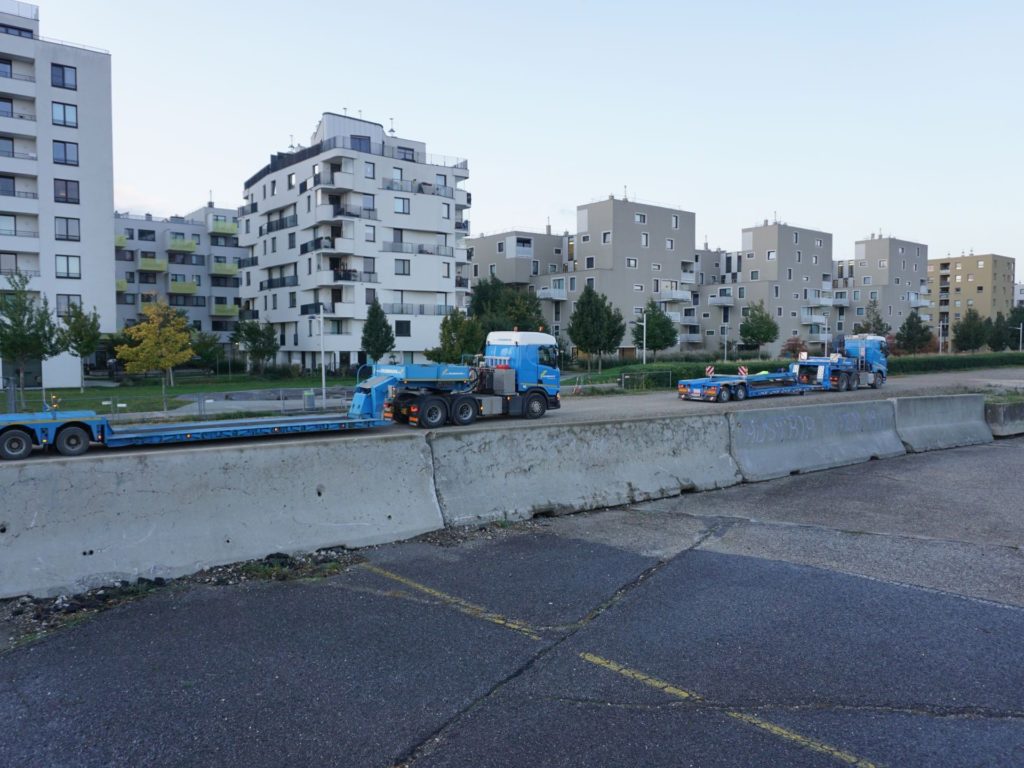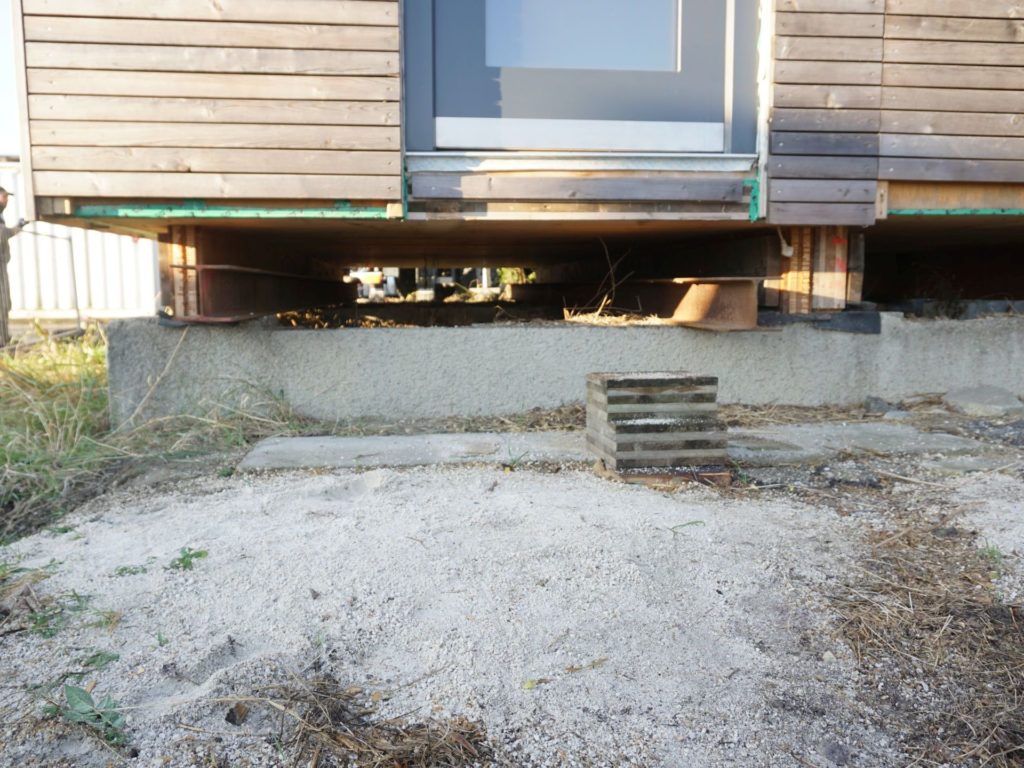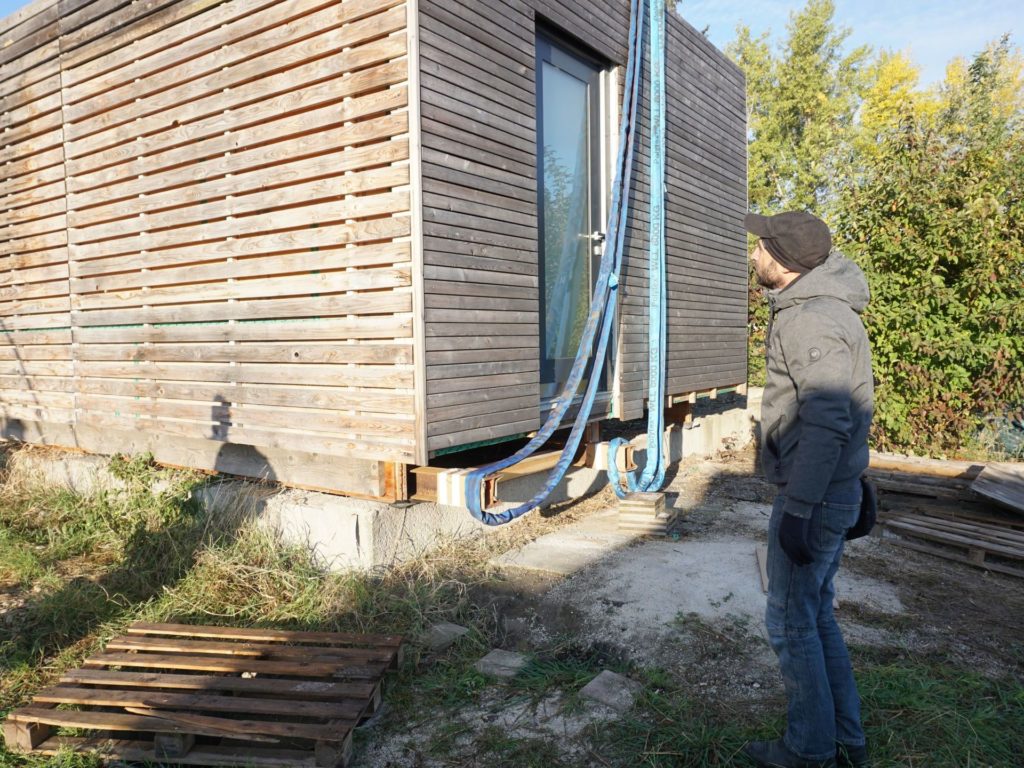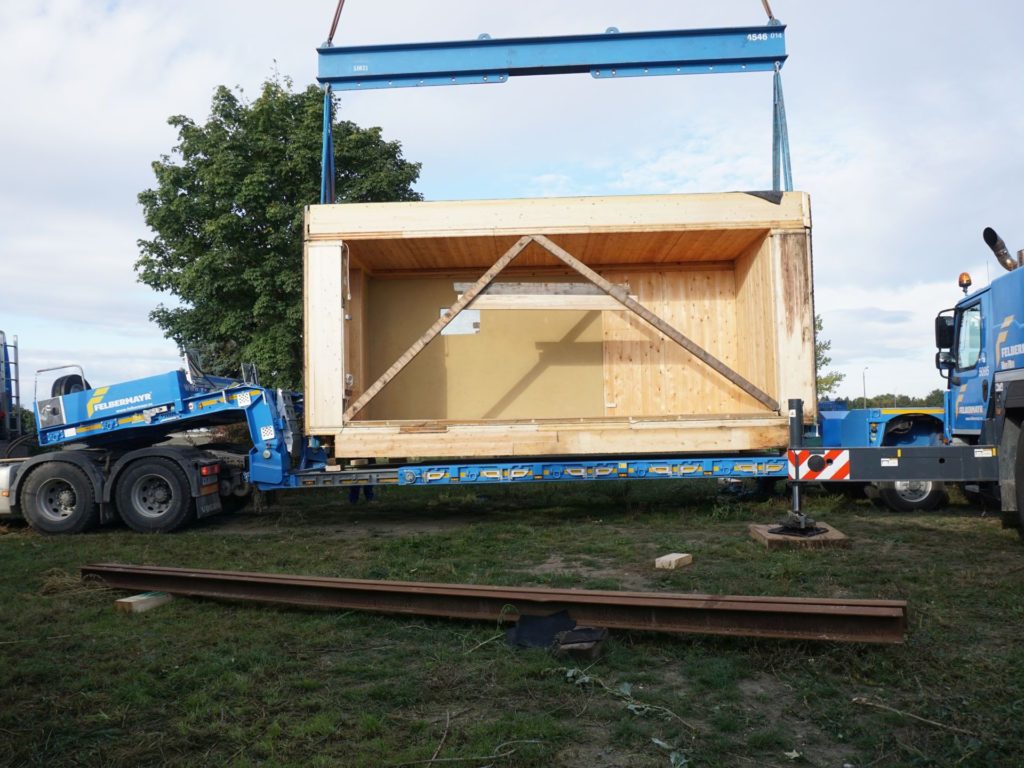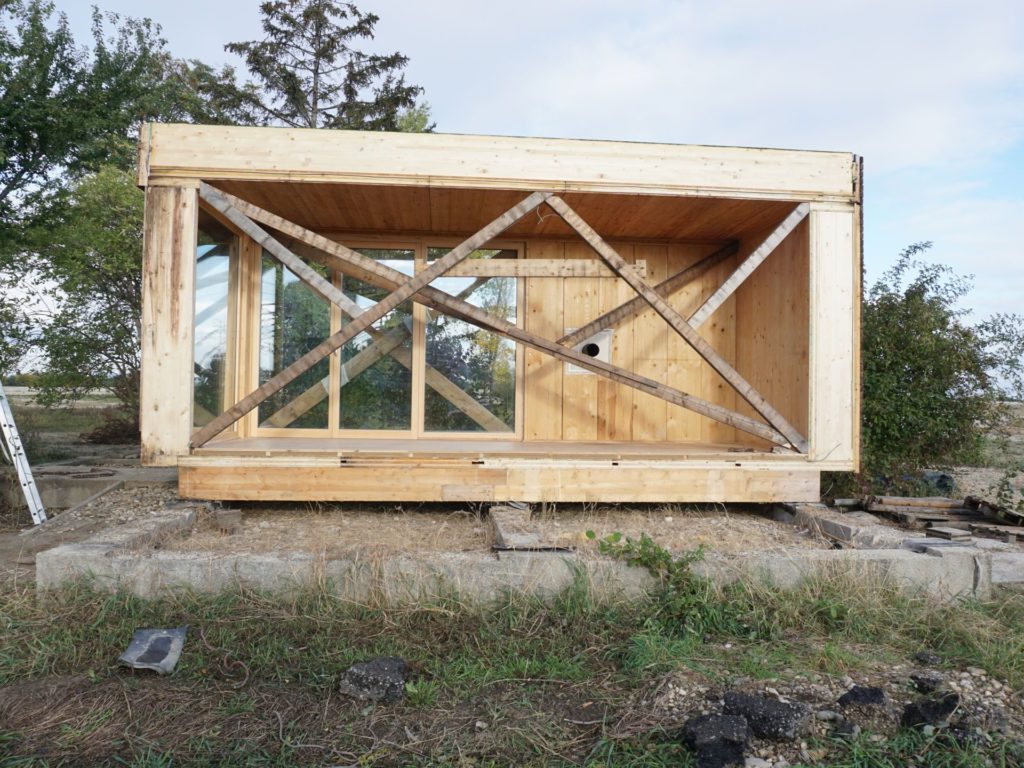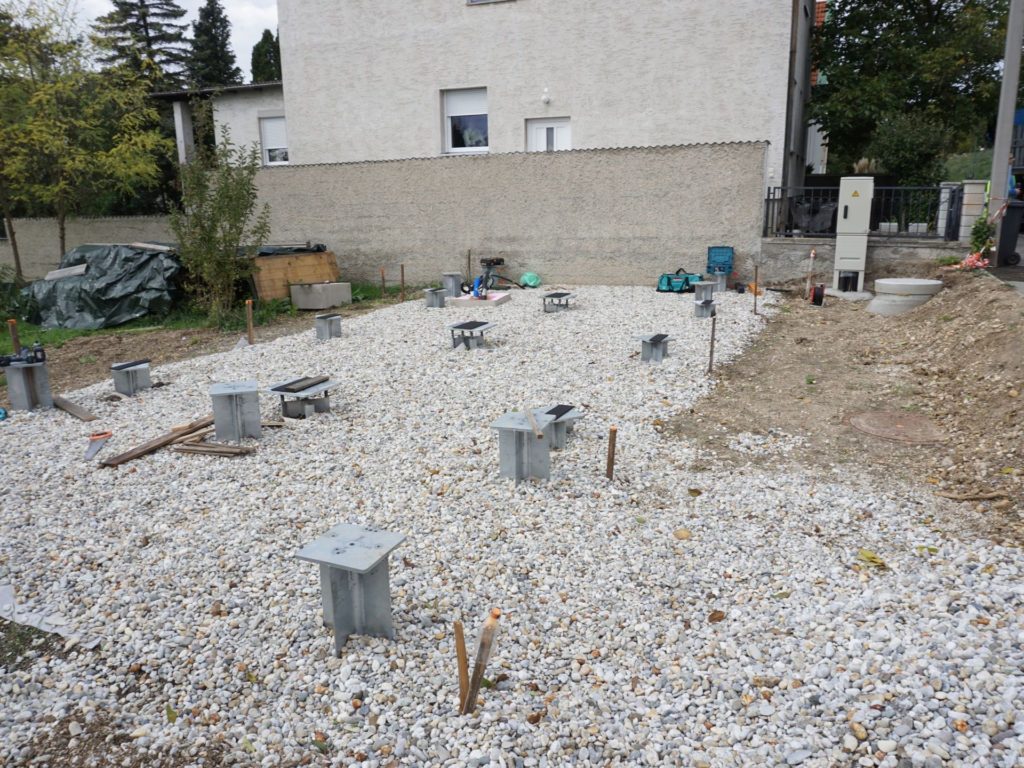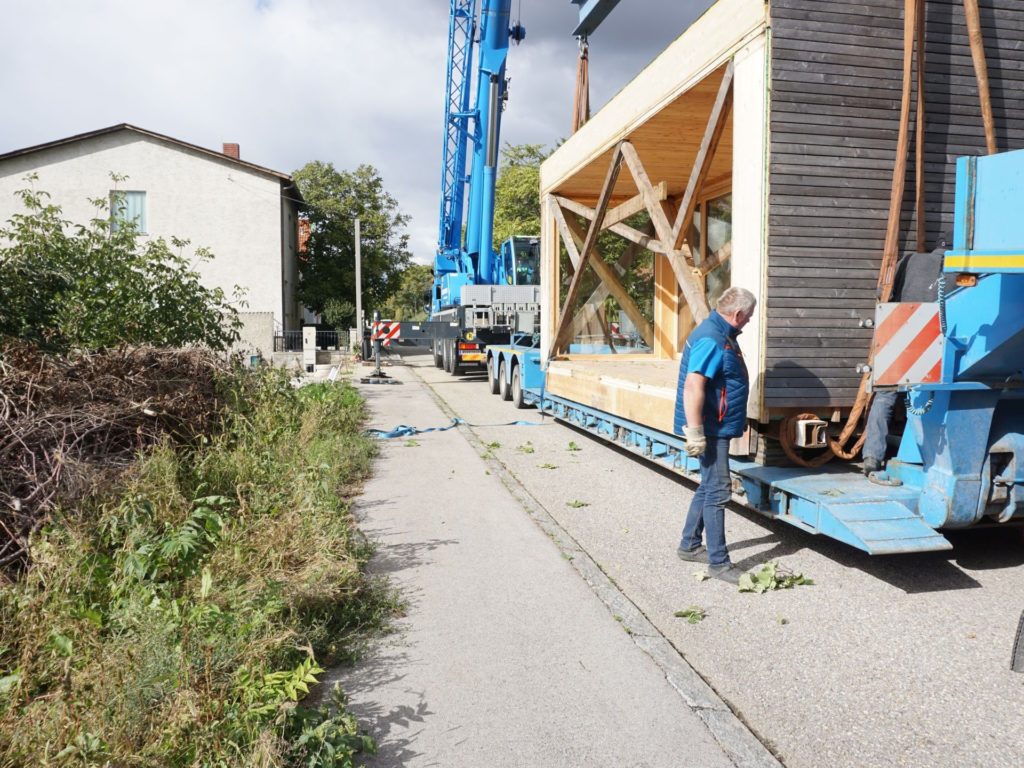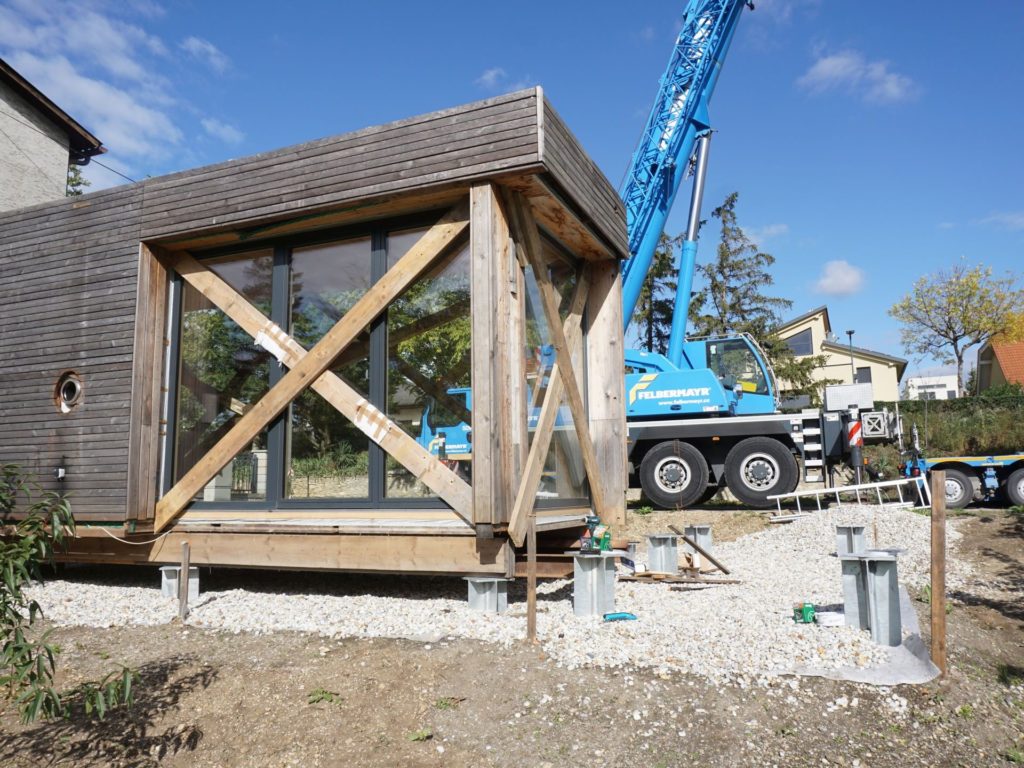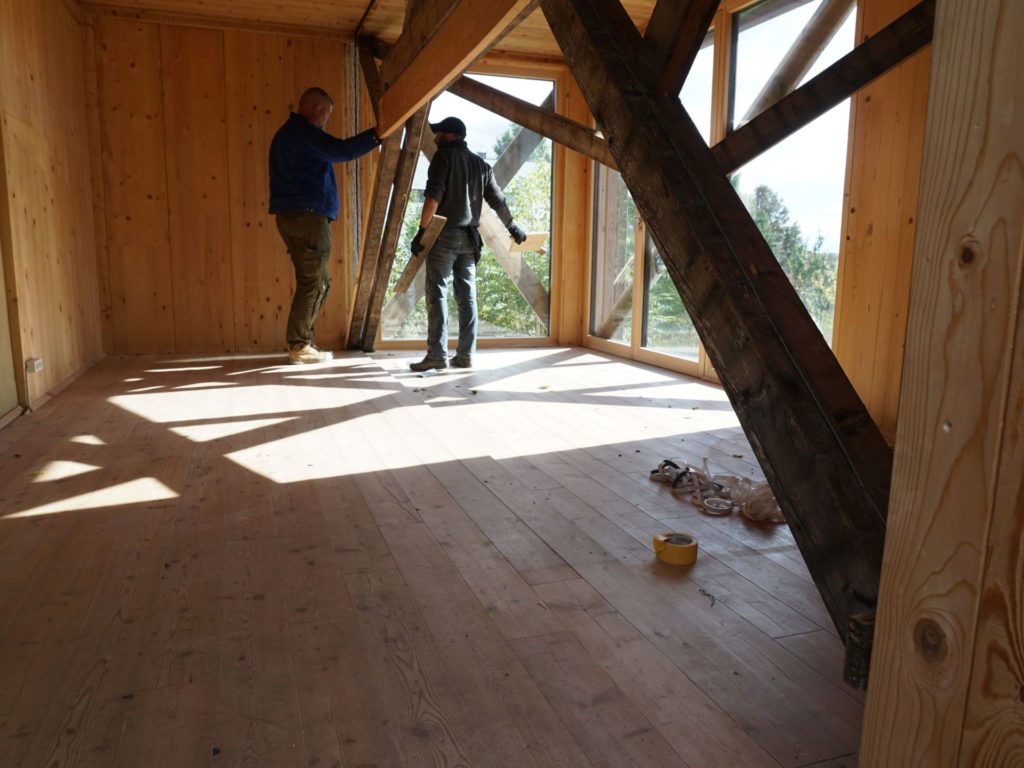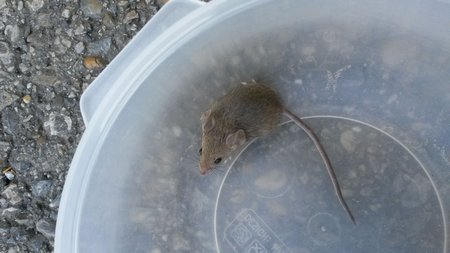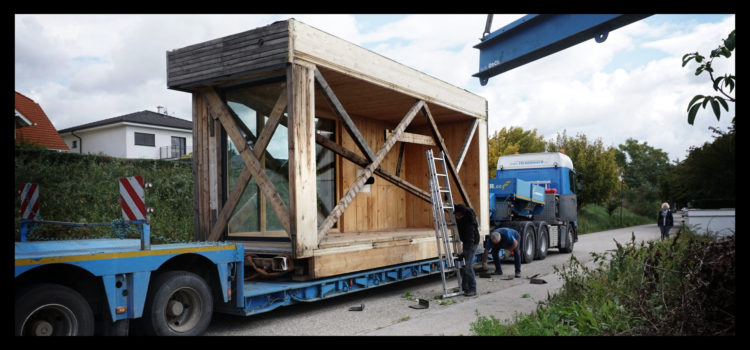
Or: When Tiny Houses grow up
It’s been about 9 years ago, that I started dreaming about wooden tiny houses. Even longer when you count my ideas of a nomadic life, of bringing my house with me wherever I go.
About a year later, I was the proud owner of a construction container, that I turned into a cozy little tiny house experiment (see story here). I lived in my container house on and off for several years, but since there was no running water and only limited power, and no ideal heating solution, I knew that it couldn’t be a long-term solution.
What I learned, however, was, that living in such a small space was not limiting at all, as long as I had a garden to extend my living space.
Now, all those years later, I finally arrived at my next step of living small: A house, made out of solid wood panels, straw insulation, and clay walls on the inside. A house, that was about double the size of my container. A house, that was built as a research project, and designed as too parts that can be unscrewed and transported separately, using a crane and a flatbed truck.
The project started out of the necessity for the house to find a new home, and ended up being one of the best decisions of my life.
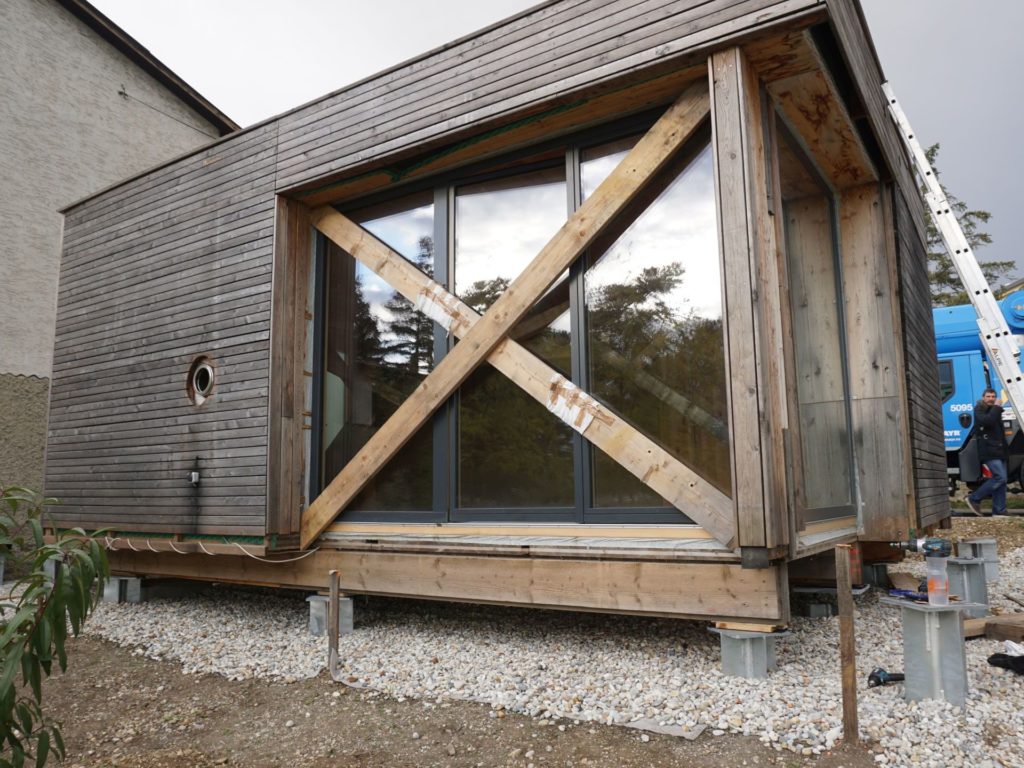
The preparation for the transport itself was quite the exciting undertaking
plans and permits
First, getting all the plans and permits needed to be done in a very limited amount of time, because the house needed to leave its original home within a little more than a month. And even though it took almost two months, it would have never been possible without the right connections: to the architect , the contractor, the plumber and so many others, that made it possible that all the preparations were done.
transport preparations
The preparation for the transport, the move itself, and then the touches before it was finished and more or less livable where another big project of its own. And the one with the most stomach aches involved.
First, we needed to remove the terrace around the house, find the places, where the house was screwed together, and put up some stabilizing planks so that the two pieces wouldn’t twist, and through that ruin the windows or have the whole thing break down.
And even with a lot of help it still took few days.
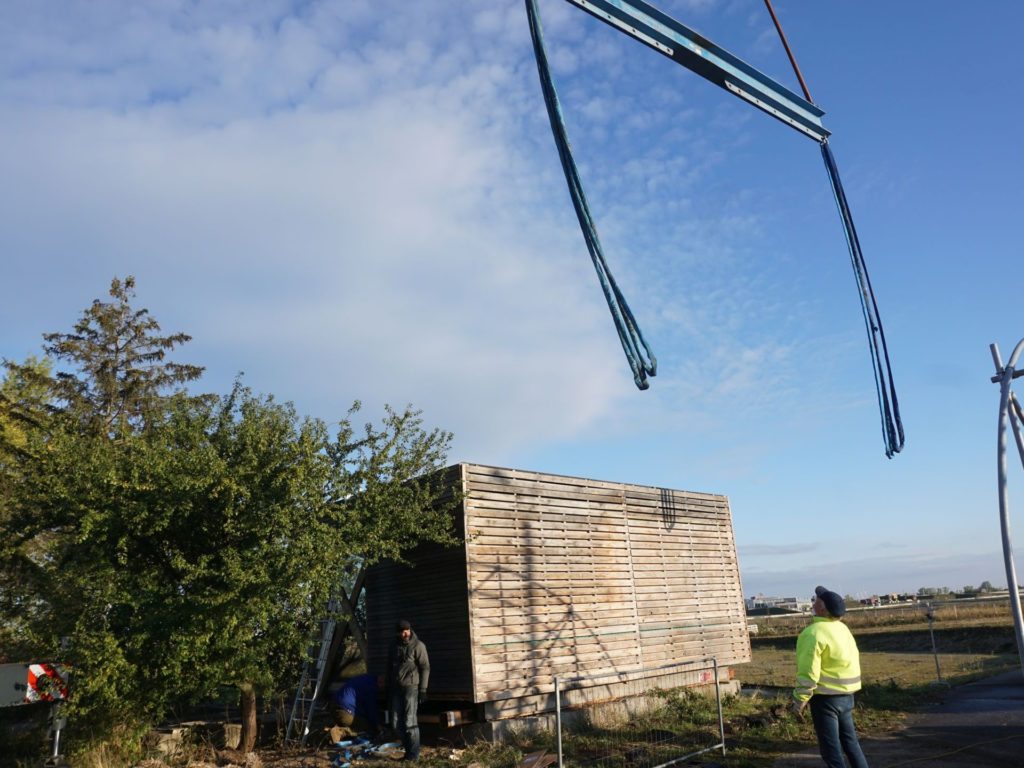
And then there was the transport …
A friend had arranged all the details with the transport company, but there still were misunderstandings, so they had to come a second time to actually be able to do the transport… So I actually had two times all the excitement and worrying and fear if everything actually works out.
At least, by the second time I had met the people from the transport company, and saw that they were very experienced and knew what they were doing, so that was very reassuring.
The big question in the beginning was, if we had actually found all the screws that were holding the two pieces of the house together, and if the people who built it had actually thought about everything and calculated it the right way. So when they tried to lift it and nothing happened, we got seriously worried. But our transport guys stayed calm, tried some tricks, and with a short crack they could finally lift it! And it was just a tiny piece of the floor that had reached over to the other side and broke off. So nothing really to worry about.
The rest was smooth sailing.
All the reinforcement logs were maybe too much, but took care that the boxes didn’t move within themselves, so no glass broke, and nothing twisted or fell out of place.
The new home
Even the arrival at my place worked out well. All the cars hat parked somewhere else, and so the huge trucks had no problem reaching their destination. Putting the two pieces perfectly back together however whas a bit of a challenge. I guess, most “professional” module house offers have some kind of system to fit the pieces together perfectly, but as this house was a prototype and research project, it didn’t have any of it. So with the huge crane, we needed to fit them perfectly in hight and width. And after lifting the house 3 or 4 times, I simply went with good enough. it was 1 mm of to the top and to the side. And that’s far from ideal, and I can see the results now, but it was pretty impressive that they even managed that. So I was happy.
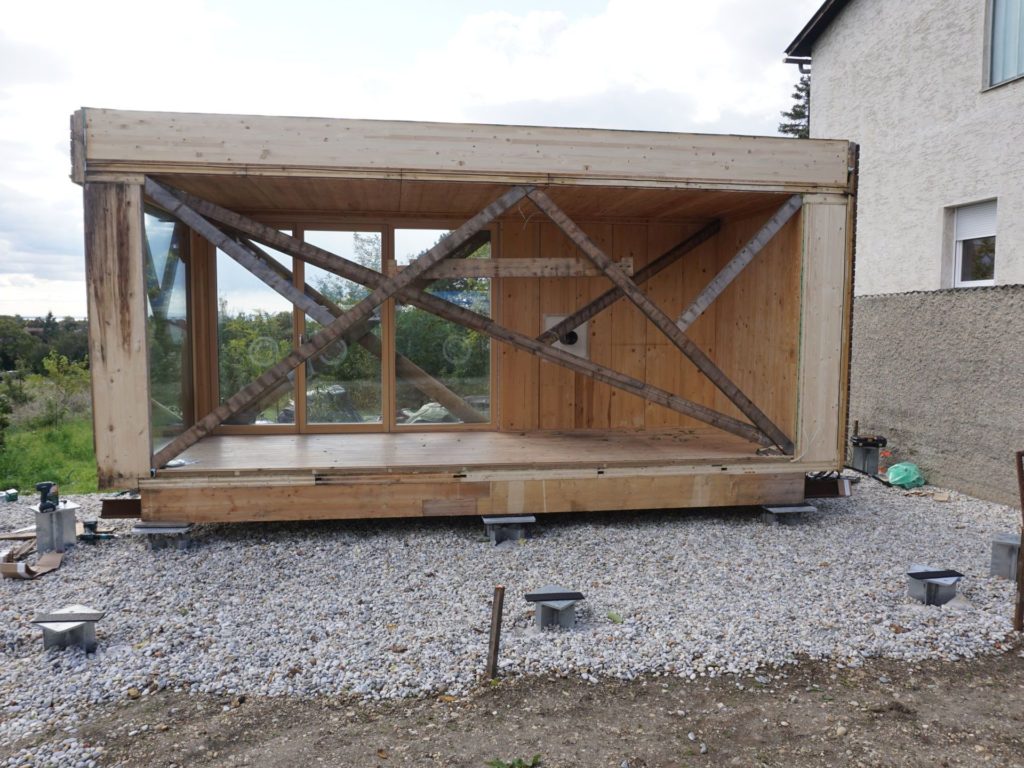
Arriving
So now, both halves of the house were finally at their final destination. at their home. Now we still needed to screw the pieces back together, screw them onto the foundation, and make sure that everything was rain-tight. But after all of this, and also removing all the reinforcements on the inside, I finally had a new home! Empty, and still without electricity and water, but a home nonetheless! And with an awesome view too!!
More on how I made that house my home in the next installment of The Tiny House Diaries 🙂
Impressions
